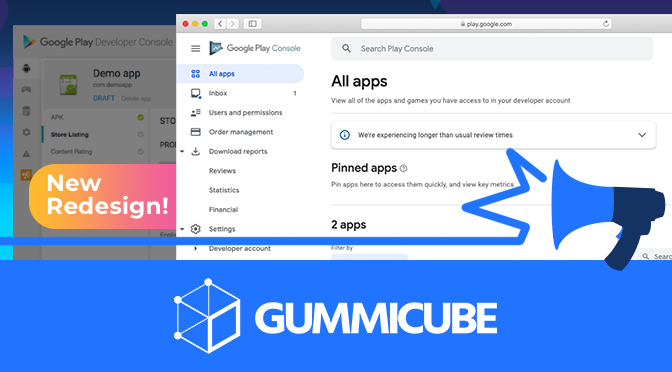
App Store Holiday Schedule 2020
Posted on November 23rd, 2020
When is the App Store Holiday Schedule 2020? Learn about the dates of this year's shutdown and how to prepare.

Google Play has announced new changes to the Developer Console, designed to provide new insights into installs and performance. These changes can be used to gain an in-depth look into your app, which can help you fine tune your App Store Optimization strategy. With that in mind, let’s take a look at the new changes and see how they can help your app, as well as what the data can’t tell you that ASO software can.
The Google Play Developer Console is providing new metrics and ways of analyzing performance. From the Statistics section of the console, developers can sort and analyze their performance according to:
This change separates out several aspects, such as new installs versus returning users or pre-installations and peer-to-peer sharing. Previously, developers could only see “First Time Installers” or “Installs on Active Devices.” With this change, they can get a sense of how their ASO strategy impacts new users and return users. Developers can select different metrics for each section, enabling them to get a closer look at subsections of users.
A new change analysis chart shows the largest changes during selected time frames. With this, developers can see when certain user trends began or see if their latest releases have impacted their app’s success.
The Developer Console is also allowing developers to save reports with configured metrics. That way they can go back and check the same combinations of metrics over time to see changes quickly. The console can also suggest reports to find new ways to analyze data.
All configured data can be downloaded as CSV files from the interface.
Several metric names are changing as well. For instance, “Installs by user” is now “New users,” so developers can track changes by new users, returning users, and the same user on multiple devices. Similarly, “Uninstalls by user” is now available as “All users” under “User loss.”
For device-specific changes, “Installs on active devices” is now simply “active devices” and “installs by device” is now “new devices” under the “device acquisition” category. Likewise, “uninstalls by device” as listed as “all devices” under “lost devices.”
“Install events” and “uninstall events” remain unchanged, except they are now found under the “Devices” section.
Google has noted that some new metrics map onto older ones, which will include historic data, while others have new metrics generated from launch day.
While these changes will not impact how an app is optimized on the Google Play Store, they can provide insights that developers can use to fine-tune their App Store Optimization strategy.
Identifying trends is helpful for tracking the success of an app’s optimization or identifying weaknesses. The console’s ability to automatically alert if large changes occur can help developers stay aware of how their installs are trending.
The metrics can also help identify errors that may impact individual types of devices or upgrades. For instance, if the “Uninstalls by device” metric rises suddenly, it can be an indication that the app is not working properly on specific device. This can quickly provide insights that developers can use to find and fix bugs before the issue becomes widespread. While it was previously possible for developers to find this information, the new metrics make it easier to quickly identify these changes.
With that said, while the Google Play Developer Console can provide insights into an app’s performance, it is still an overview and is not a substitute for the insights ASO software can provide.
Google Play’s page reports provide tools for analyzing conversions, discovery, performance and so forth, but these give more of an overview than an in-depth analysis. Though the new Statistics metrics are helpful to break down things like new vs returning users, Statistics will not separate traffic by channel. Separating traffic by channel is vital to understanding user behavior across different sources and how to optimize your overall ASO strategy, including organically and through paid marketing.
The latest updates to the Google Play Developer Console can help developers get a new look at metrics and trends, which is helpful for identifying success and sudden changes, and can help supplement an app’s ASO.
Want more information regarding App Store Optimization? Contact Gummicube and we’ll help get your strategy started.

When is the App Store Holiday Schedule 2020? Learn about the dates of this year's shutdown and how to prepare.

Apple's App Store Guidelines have strict privacy requirements. Developers now must provide information to users on the App Store listing regarding the data they access.

The Google Play Developer Console has been updated with a new design and adjusted tools. What's different, and how will it impact App Store Optimization?